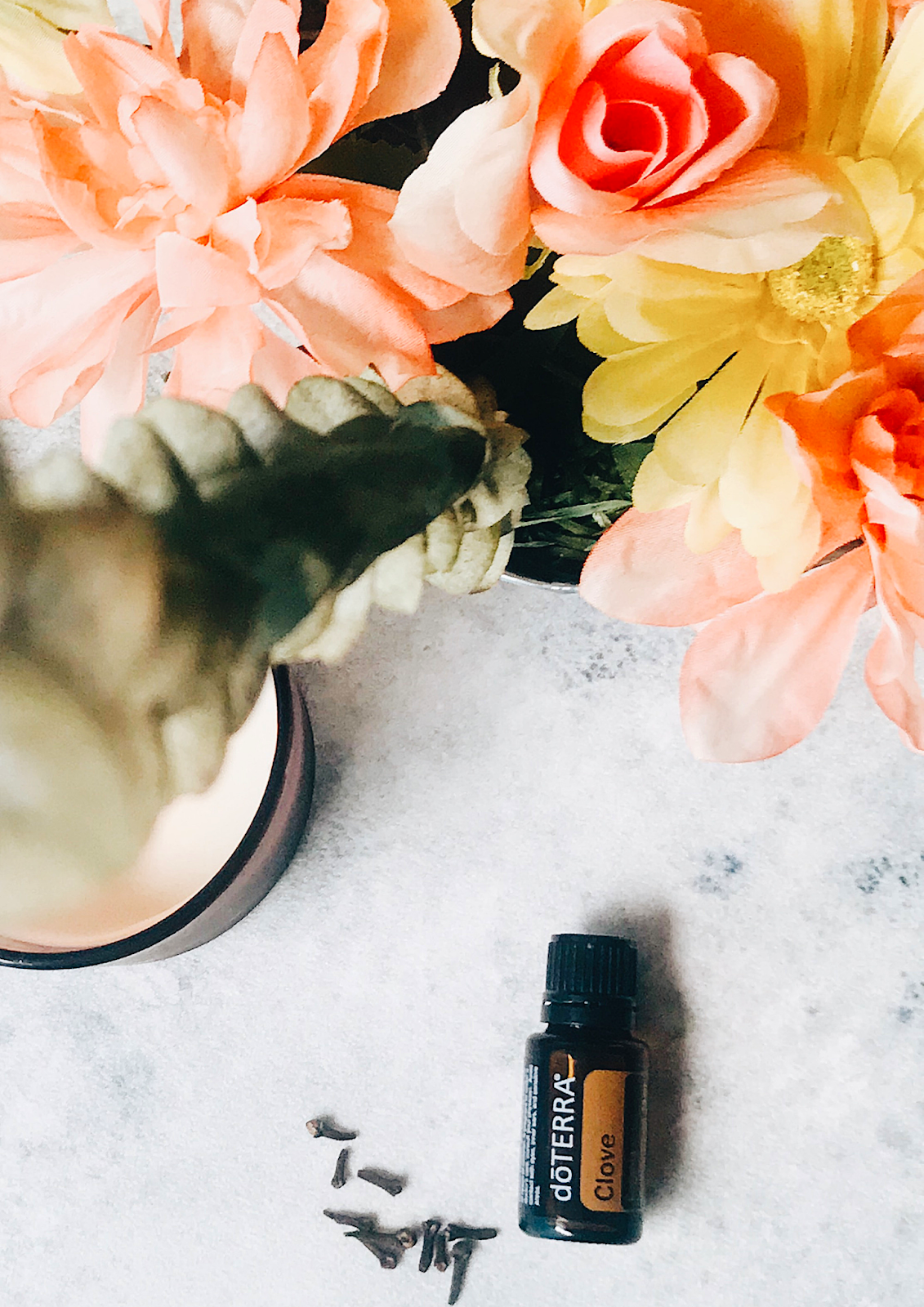Today, I wanted to talk about five plants, trees and spices that have been around for ages. These have been used in many ways exceeding the conventional methods.
1. Clove: Eugenia caryophyllata
I have always thought clove to be kin to cinnamon. In fact, I typically called cloves, cinnamon’s step-sister because of how it smells and how it’s often the underdog in the Western world. Clove is a spice you may have smelled during the Advent season in beverages or baked goods. It's such a great spice that my parents used whole and ground.

As far as remedies and food are concerned, my childhood was not exactly traditional (and how thankful of that I am). My mum used cloves just as much as cardamom so I loved it! I personally cook a lot of North African and Southeast Asian dishes and pop cloves in many of my meals, sauces, and seasonings.
In essential oil form, clove’s warm, woody and spicy notes ignite comfort with a subtle underlining sweet leathery scent. It has antioxidant, anti-fungal, and antimicrobial properties and it’s often used for medicinal purposes; controlling blood glucose levels for diabetics, and preventing blood clots.
Blimey! Did you know that this ancient spice is 400 times more powerful than blueberries or wolfberries?1


How to use this: Need a random breath freshener? Chew on a clove but not for too long otherwise, it will produce a numbing effect on your gums! Eugenol is the main constituent and gives a stimulating effect as well as warming, so there’s no surprise that it has been used in the past in massage rubbing oils, toothpaste and by dentists to cleanse the mouth.
Have you ever had a clove spiced tea? It’s one of many ingredients used at Christmastime with a healthy splash of milk. As a child, my parents had to make it with a milk substitute for me because I was lactose intolerant. Fortunately, that dissipated, although these days I do like it with almond milk.

2. Spikenard: Nardostachys jatamansi - (Topical use only)
The aroma of spikenard is peppery and spicy yet it has the slightest lime undertone. I had never used Spikenard oil prior to this experience. An ancient oil used in the biblical times, spikenard was the same oil that anointed the feet of Jesus, and oil that was stated as a very costly one even then. It’s a clean black peppery fragrance that is surprisingly not overbearing but interesting.2
Spikenard has been used for many centuries in Ayurvedic practices and as a healing oil for the esteemed in India.
How you can use this: This oil has been used in cleansers to promote radiant skin, and also can be used for relaxation. Blend it with rose, lavender and other essential oils for fragrance. Today, it is mostly known as a grounding relaxing oil, and for its ability to blend very well with other oils, as it is often used in perfumery.

3. Sandalwood (Indian): Santalum album
Most notably, the Egyptians used sandalwood for embalming, but let’s get into sandalwood’s wonderful quality of versatility. The woody and dry spicy aroma is a similar scent to vetiver, in that it has a resin-like quality to it, including the smell. This is often used in colognes, soap, beauty, and body care products; the musky scent of sandalwood has a unique sweetness to it though.
I have known it to be used in incense from my father burning it occasionally, and for religious ceremonial purposes, so it’s generally not an oil that I’d use on a daily basis, personally. It also faintly reminds me of funerals from childhood.
Poultices, Aromatherapy, and Balms: India has been known to produce some of the best sandalwood oil in the world. Being used to treat urinary tract infections, sore throats, mental disorders, and anxiety relief, amongst other ailments, the oil doesn’t lack in end uses. Sandalwood is also known to promote good spirituality; in some cultures, it is actually used as an aphrodisiac.
How you can use this: Use it in aromatherapy. Diffuse the oil to lessen irritability and help you sleep better. Studies have shown sandalwood to smooth skin and help with skin imperfections. Or, use sandalwood oil in a steaming facial with a cloth or towel over your head to rejuvenate your skin.

4. Marjoram: Origanum majorana
I only know marjoram as a cooking herb, so this was interesting to use and smell the essential oil. The oil is refreshing; it has a clean, light and herbaceous aroma. Used by the Romans and Greeks for centuries, marjoram was a symbol of happiness. In Germany it's better known as the ‘Goose Herb’ — traditionally marjoram was also used for roasting poultry and fowl; geese, chicken, et cetera, which is more up my street.
How you can use this: Marjoram has calming properties and can be used in a diffuser to calm any environment, or used on your body (especially on the feet) as an anti-stress ointment. I used it that way. When taken internally, uses include flavouring soups, poultry dishes, stews and even dressings. In addition to supporting a healthy immune and cardiovascular system, marjoram can be used as a natural muscle relaxer.
5. Eucalyptus: Eucalyptus radiata
This plant pretty much saved my life! I was asthmatic as a teen, and when it had gotten a little concerning one night, my mum would make eucalyptus balm from the steamed leaves to rub on my chest to open air passages. You’re probably pondering whether or not my parents were hippies … No, they weren’t! They merely believe in holistic remedies and were raised just the same — as much as it is cultural remedies it is also generational practices that have remained. I haven’t any complaints because everything has worked out so far. So, there you have it.
Eucalyptus trees (or gum trees) are evergreen trees growing almost as tall as 15 metres or about 50 feet high.
How you can use this: Use it to alleviate tension and stress. Eucalyptus promotes healthy breathing, purifying and cleansing benefits for the skin, as well as cleaning surfaces. It can also be used as a natural pesticide to ward off bacteria, insects, fungi and mites.3
Diffuser or humidifier usage is ideal, as well as using it in your bath soak. If you are sensitive to peppermint, then you may be sensitive to eucalyptus. If so, then use this mildly, or add one drop of oil in your foot lotion or body balm after a stressed day. A little will go a long way!
Collection Method: Steam Distillation

The goods: Provided by dōTERRA, a FASHION TALES blog media partner. As always, all content and opinions are honestly expressed and my own. These are suggested benefits for essential oils. If pregnant or nursing, consult your physician before using. 1Read more on cloves here, 2Reference Guide For Essential Oils, 3Eucalyptus, or Sandalwood here.

*Remember, essential oils are highly concentrated, and not to be internally, especially in high doses without proper research and an experienced herbalist, or consent from a physician. It is important to understand alternative methods and holistic healing elements are not for everyone but are natural ways of promoting health and wellness.

*Remember, essential oils are highly concentrated, and not to be internally, especially in high doses without proper research and an experienced herbalist, or consent from a physician. It is important to understand alternative methods and holistic healing elements are not for everyone but are natural ways of promoting health and wellness.
I hope that you were enlightened about oils, herbs and spices from this post.
Have you used any of these essential oils?
Have you used any of these essential oils?



.jpg)








Post a Comment